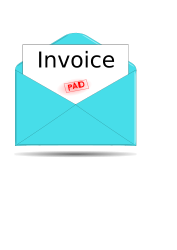Why Easy Payment Plans Are a Bad Deal

Easy Payment Plans
We’ve all heard the siren song of easy payment plans, which lure us into purchasing too much stuff at too high prices. Some easy payment plans are easy to identify. For example, QVC is selling a 14K gold quartz cuff bracelet for $997.00, with buyers having the option to “Easy Pay! 5 installments of $199.40”. But other easy payment plans are craftily disguised. What all easy payment plans have in common is that they're a bad deal for the buyer.
Easy Payment Plans
An easy payment plan is a way to make it easier for a buyer to pay for a product by breaking down its purchase price into multiple payments. The easy payment plan is “easy” since the amount of each payment is usually significantly less than the purchase price, and is thus easier to pay.
There are many types of easy payment plans. Some are easy to identify since they are explicitly identified as easy payment plans. For example, QVC and other television and online shopping channels often advertise the availability of easy payment plans for their more expensive items.
Other easy payment plans are still easy to identify, but are not explicitly identified as such. For example, holiday layaway plans offered by Wal-Mart and other major retailers are easy payment plans because they allow buyers to pay for their holiday purchases in multiple installments.
Some other easy payment plans are disguised. For example, cell phone carriers offer what are essentially easy payment plans for expensive cell phones. Instead of charging a high up-front price (e.g., $600) for an iPhone 5 phone, they charge a much lower price (e.g., $199) and then recoup the rest of the cell phone’s purchase price over the course of a 2-year service contract.
Another example of a disguised easy payment plan is a cable TV subscription including a digital video recorder (DVR). The customer gets a DVR for “free”, but effectively pays for it through her monthly cable TV bills over the course of a 1- or 2-year subscription. The payment for the DVR is “easy” since its up-front cost is zero, and its effective monthly cost is only a part of its price.
As these examples show, easy payment plans are pervasive, and we often agree to them without even realizing it. Even if we know enough to avoid QVC’s explicit “Easy Pay!” pitch, we often agree to other easy payment plans, and sometimes find ourselves with no choice but to accept them.
Problems with Easy Payment Plans
There are many reasons why easy payment plans are a bad deal.
First, easy payment plans make it too easy for consumers to decide to make purchases. For example, many people aren’t even considering getting a DVR when they call their cable company to order service. When the agent offers to include a "free" DVR, they quickly agree. It’s likely that many people who order a DVR would have made a different choice if they had been forced to pay its full price up-front rather than spreading its cost over the duration of their contract.
Second, easy payment plans make it easy to overpay. When the price of an item is broken into installments--most of which will not be due until sometime in the future--many people stop paying attention to its total price. For example, when a customer buys an iPhone 5 for $199 from a cell phone carrier, along with a 2-year service contract, the customer may not even ask himself what he will ultimately pay for the phone. Thus, he misses out on the chance to comparison shop.
Third, easy payment plans make it easy to spend more than we can afford. Many people would find it crazy to buy a 14K gold quartz cuff bracelet for $997.00 because they don’t have that much money in their bank account. Yet they can justify making a payment of $199.40 for it because they do have that much money. Making the payments “easy” enables people to overspend.
Fourth, easy payment plans make it too easy to keep paying for things we no longer want. For example, many people initially order a DVR with their cable service because its up-front cost is zero. Then they keep paying for the DVR in their monthly payments--even if they never use it!
Fifth, easy payment plans are enemies to building wealth because they disguise the total amount of money being spent. Companies use these plans because they want to separate their customers from as much of their money as possible, which is very detrimental to their customers’ wealth.
Build Wealth by Avoiding or Minimizing Easy Payment Plans
To spend less and build wealth, consumers should avoid or minimize easy payment plans. Some easy payment plans, such as the ones offered by QVC and other shopping channels, are easy to avoid. If you decide to make a purchase from such companies, simply pay the entire cost upfront.
Other easy payment plans, such as from cell phone carriers and cable TV providers, are difficult to avoid. Customers can sometimes avoid them by making purchases upfront, such as by buying prepaid cell phone service or buying a DVR outright. In situations where easy payment plans are unavoidable, customers should be sure they truly wish to make the purchase, they are not overpaying, they can afford it, and they can easily get rid of it once they no longer want it.








